
The most famous 10 poisonous snakes in the world
On Earth, there exist over 3,000 different types of poisonous snakes . These reptiles that rely on external heat for their body temperature inhabit almost all parts of the world, with the exception of extremely frigid regions such as Antarctica, Iceland, Ireland, Greenland, and even New Zealand, which may come as a surprise.
Not all snakes are harmful. Only a small proportion of the total number of snakes in the world, around 15 percent or 450 types, are venomous. Out of these, only one-third or 150 varieties possess the ability to fatally injure a human with a solitary bite.
Although our list specifically includes poisonous reptiles, it is important to remember that the term "lethal" doesn't solely apply to those that have powerful toxins. Some non-venomous serpents, such as garter snakes and pythons, also have deadly capabilities. These snakes can cause fatality by either suffocating their prey through constriction or devouring them alive.
The subsequent narration highlights 10 of the most lethal serpents across the globe, without any specific sequence.
1. Saw Scaled Viper
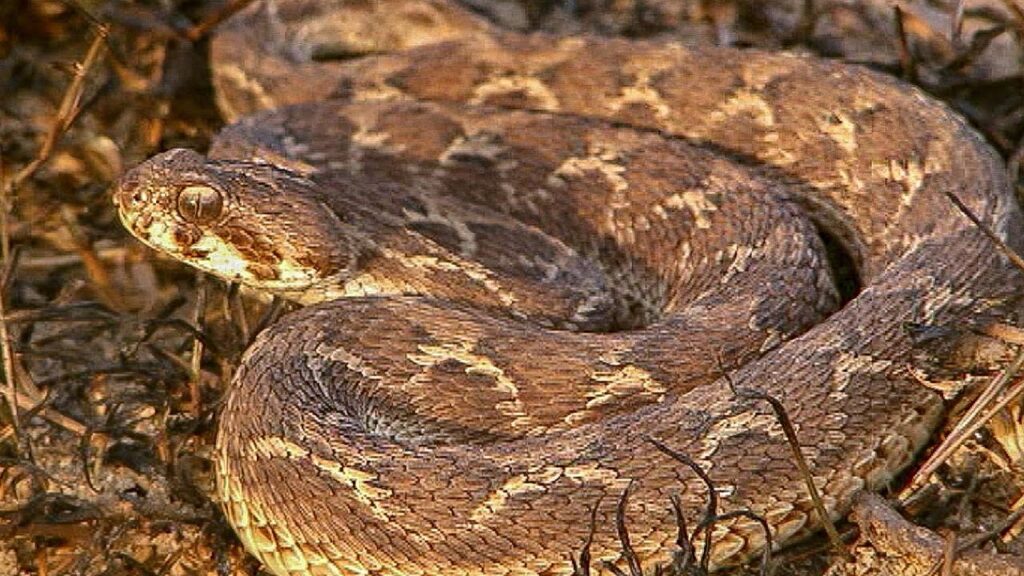
The saw-scaled viper is known as the smallest member of the "big four," which includes other venomous snakes such as the Russell's viper, the common krait (Bungarus caeruleus), and the Indian cobra (Naja naja) in India. This particular snake is believed to cause the highest number of snake bite-related fatalities in the country. Its bite can result in internal bleeding, and in severe cases, acute kidney failure. The saw-scaled viper's warning sound is described as a "sizzle" rather than a "hiss," produced by the friction between its serrated scales.
2. Inland Taipan
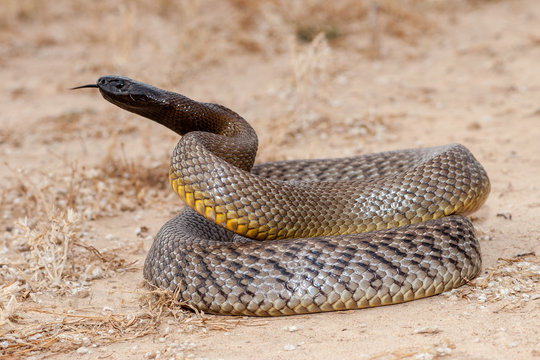
Scientifically recognized as the most venomous snake in the world, Australia's inland taipan (Oxyuranus microlepidotus) is incredibly dangerous due to its highly toxic venom. Though it dwells in hidden areas among the clay crevices of Queensland and South Australia's floodplains, it can still inflict a deadly bite if provoked. When threatened, the inland taipan will assume a tight S-shaped coil before attacking, injecting its venom into its victim's bloodstream. The venom contains the unusual enzyme hyaluronidase—the majority of which can spread rapidly throughout the body, leading to an eventual and speedy demise.
3. Coastal Taipan

The coastal taipan snake is thought to pose a greater danger than the inland taipan because it lives in areas where humans are more likely to accidentally encounter it. These snakes make their homes in animal burrows, hollow logs, and vegetation piles along the north coast and eastern regions of Australia, ranging from northeastern New South Wales to northwestern Australia. A different kind of the same snake, known as Oxyuranus scutellatus canni, lives in the southern part of New Guinea.
4. Black Mamba - poisonous snakes

The black mamba, found in southern and eastern Sub-Saharan Africa, is named after the dark color inside its mouth. This dangerous snake is known for its incredible speed, reaching up to 12 miles per hour when slithering. It's impossible to outrun these poisonous snakes , but more concerning is its venom. Before attacking, the black mamba will hiss to give a warning, but if ignored, it will strike multiple times in a rapid motion. Its venom is deadly, causing paralysis and cardiac arrest with just two drops. If you're on a safari, be cautious of encountering this dangerous creature.
5. Eastern Tiger Snake
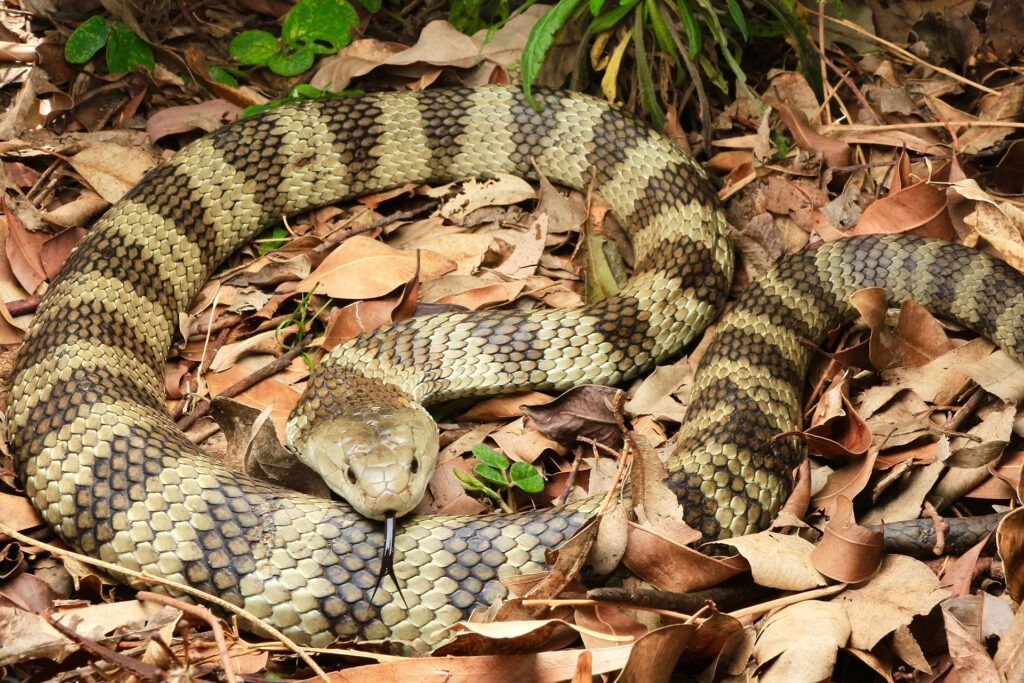
The eastern tiger snake, also known as Notechis scutatus, originates from the grasslands and mountains in the southeastern region of Australia. It got its name from the black and yellow stripes on its body, though not every group of these snakes have the same appearance. If left untreated, the poisonous venom produced by this snake can result in the death of a human who has been bitten.
6. Eastern Brown Snake
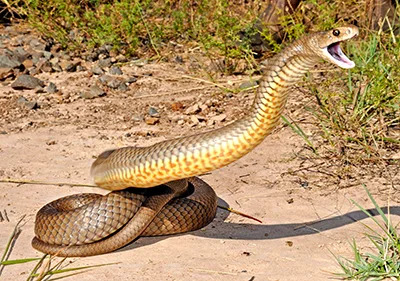
The eastern brown snake, which is highly venomous, is originally from eastern and central Australia and southern New Guinea. It typically inhabits open areas such as woodlands, grasslands, farmland, and even urban outskirts. Its potent venom contains presynaptic neurotoxins, procoagulants, cardiotoxins, and nephrotoxins. Although a bite from the snake may initially not be painful, it can lead to progressive paralysis and uncontrolled bleeding, including brain hemorrhage. Despite not being the most venomous snake, it holds the unfortunate distinction of causing the highest number of deaths in Australia compared to other snake species.
7. Russell's Viper - poisonous snakes

The Russell's viper, categorized as one of India's "big four" venomous snakes, is highly lethal among the true vipers. They reside not only in India but also in Pakistan, Bangladesh, and Sri Lanka. Paddy farmers are at a high risk of fatal accidents with these poisonous snakes as they often hide in paddy fields. The venom of this snake is known to cause acute kidney failure, extensive bleeding, and harm to multiple organs.
8. Boomslang Snake - poisonous snakes
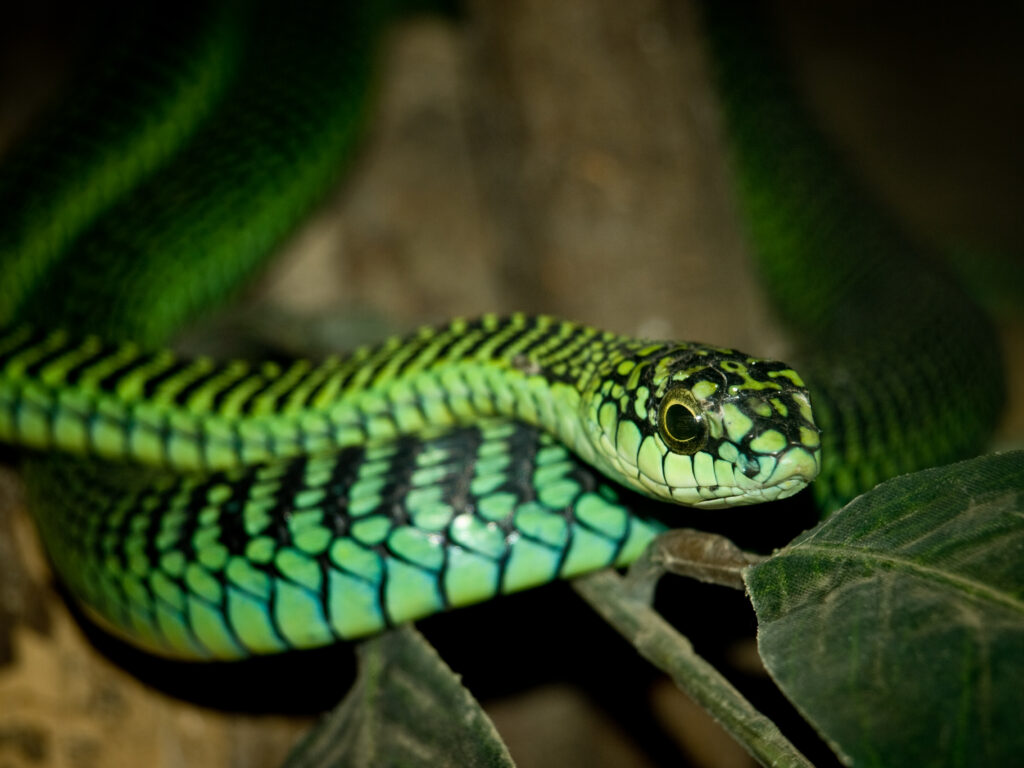
Close-up of a boomslang snake through glass at the snake centre near our campsite in the Ngorongoro Conservation Area, Tanzania
The boomslang snake, despite its humorous name, is a dangerous predator. This species, scientifically known as Dispholidus typus, is native to several countries in Africa including Eswatini, Botswana, Namibia, Mozambique, and Zimbabwe. Although boomslang snakes usually do not act violently, they can enlarge their necks to frighten off potential threats. Moreover, their remarkable ability to blend into their environment allows them to ambush unsuspecting prey. Once they bite, their venom can be lethal and can cause their victims to hemorrhage.
9. Banded Krait

The banded krait, one of India's "big four" deadly snakes, can measure up to 6.9 feet (2.1 meters) long and is one of the largest kraits. It tends to be shy and active during the night, and will only attack if provoked. The krait's venom is highly toxic, similar to that of the cobra, and its bite can cause paralysis of the muscles which can impede breathing and lead to suffocation.
10. King Cobra

The king cobra, also known as Ophiophagus hannah, is the world's lengthiest poisonous snakes , reaching lengths of up to 18 feet or 5.4 meters. With their impressive vision, they can spot their food over 330 feet or 100 meters away. They have a striking physical appearance and are considered aggressive. They have long fangs and are known for their capability to create a hood around their head to appear bigger, even though they can already pack a punch with their venom. Their venom contains a high amount of cytotoxins and neurotoxins, making it incredibly deadly. Just one bite from a king cobra can kill a human within a quarter of an hour and an adult elephant in just a few hours.poisonous snakes






































